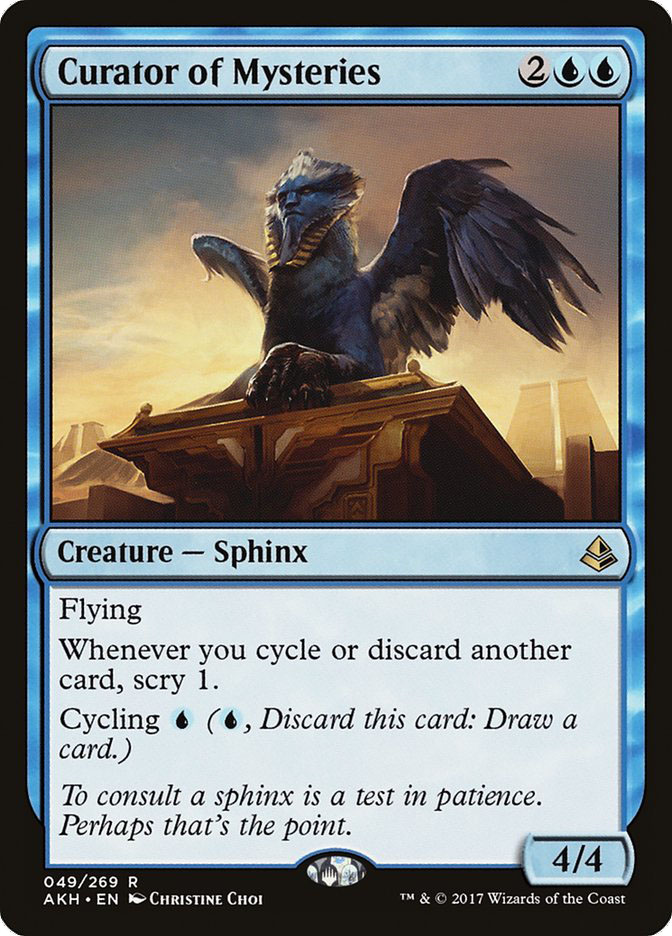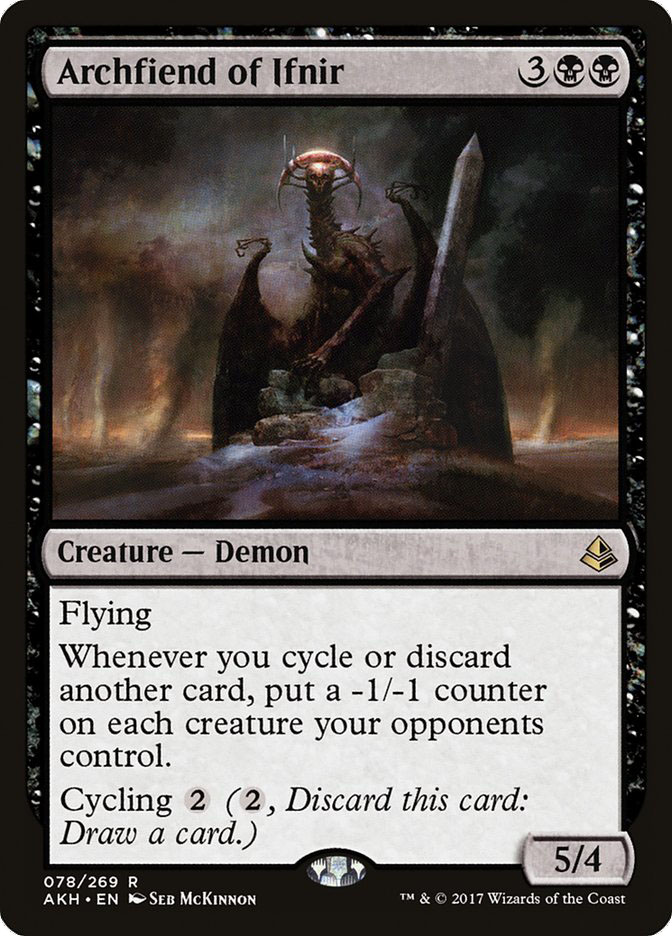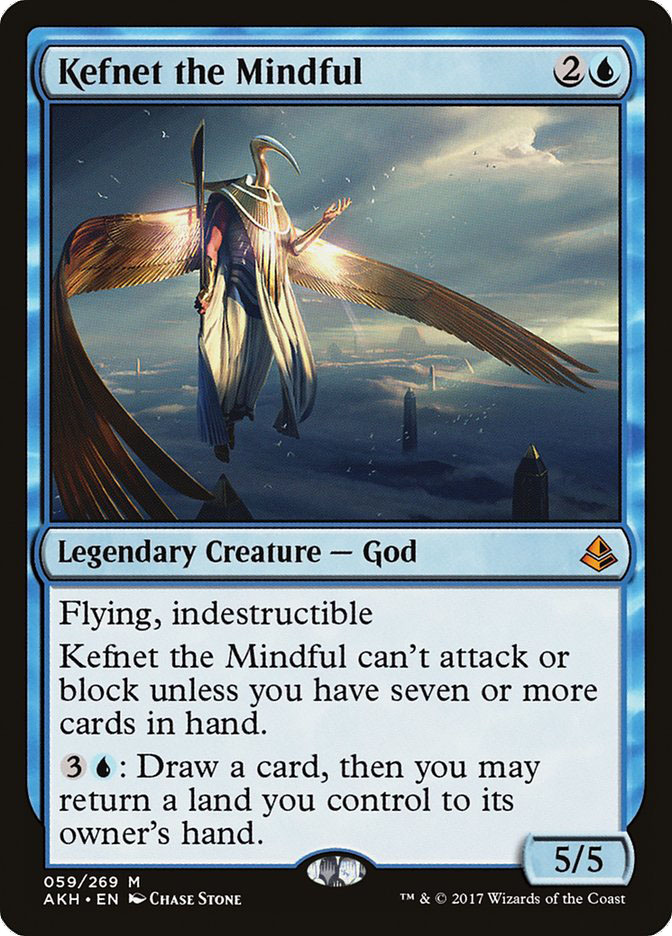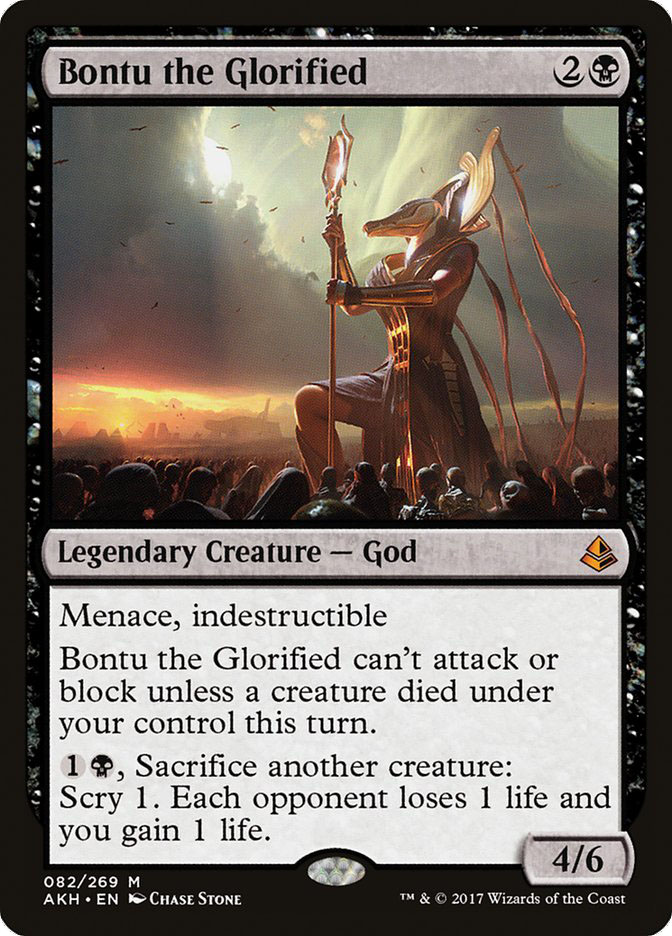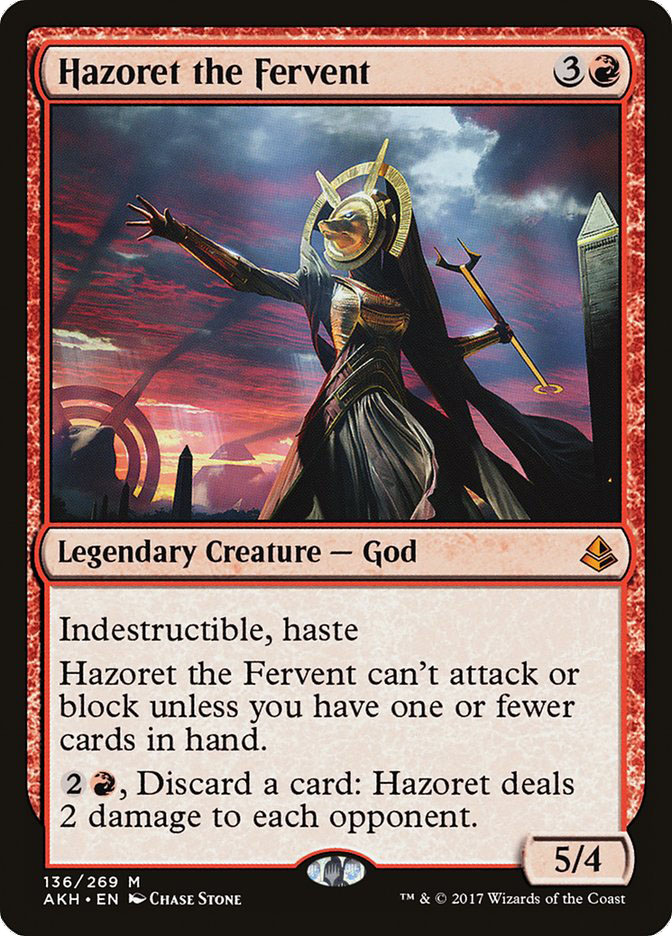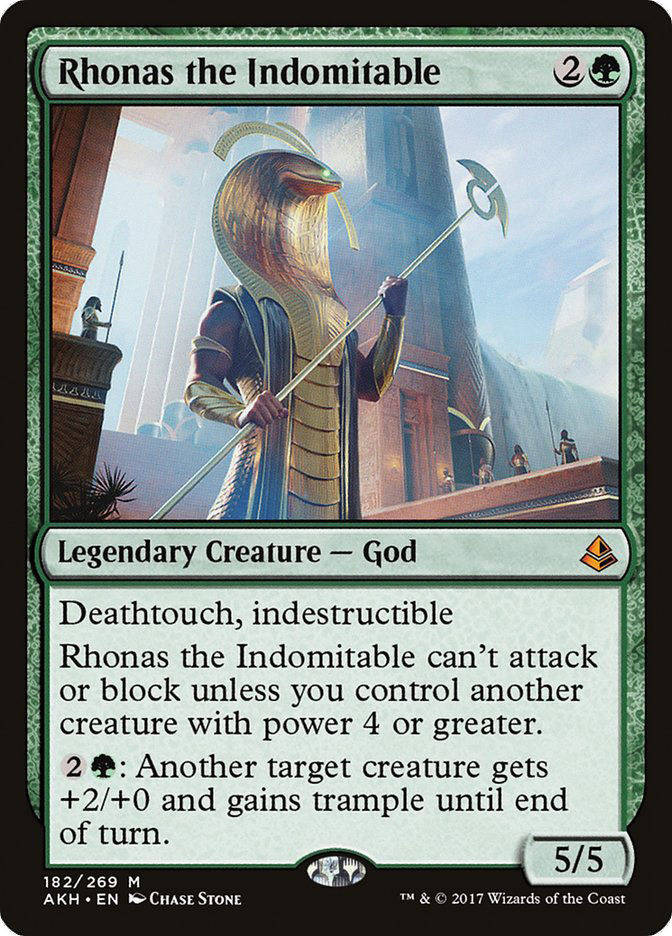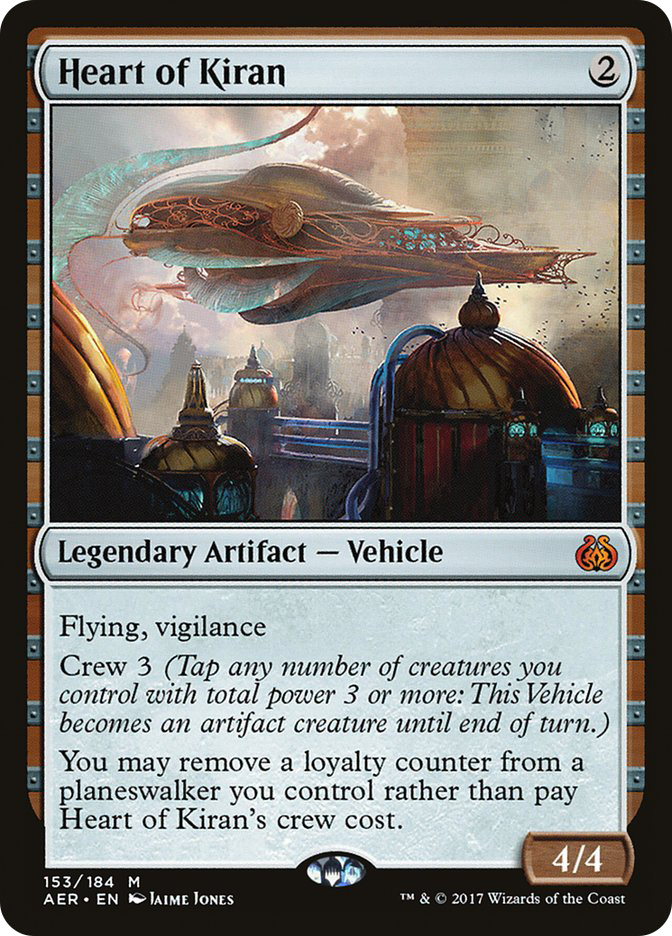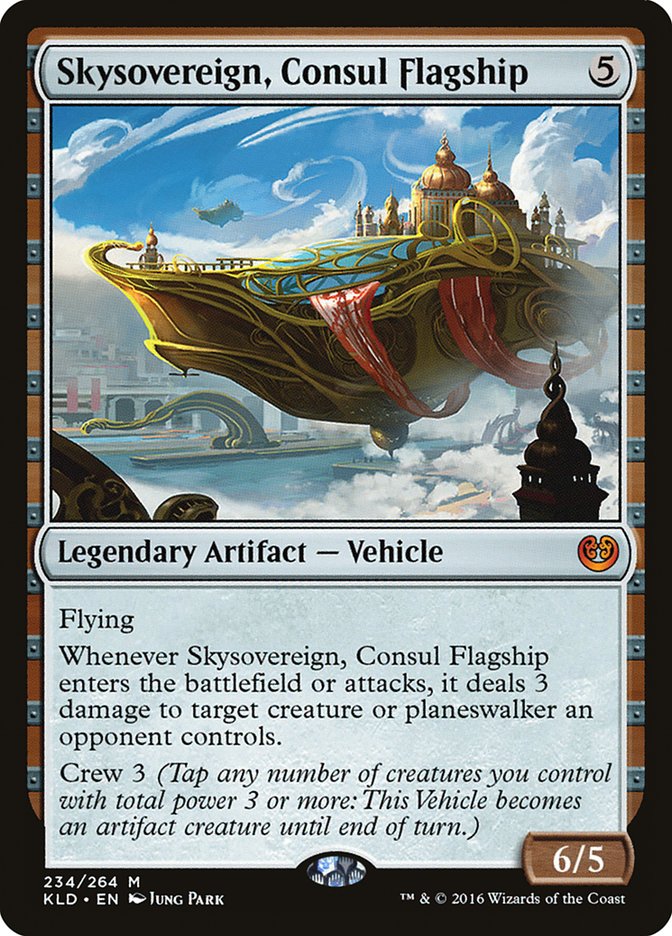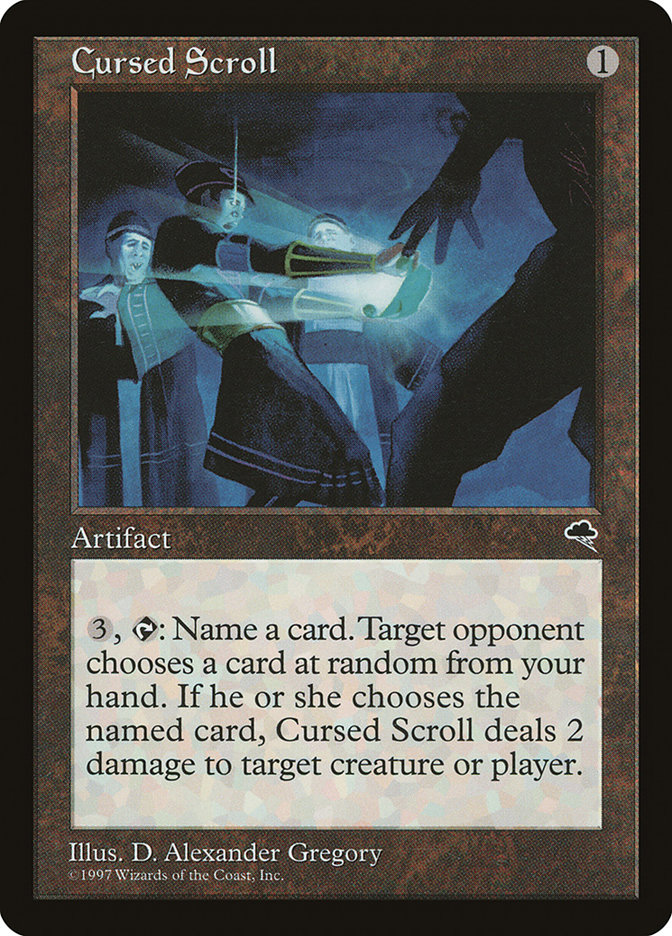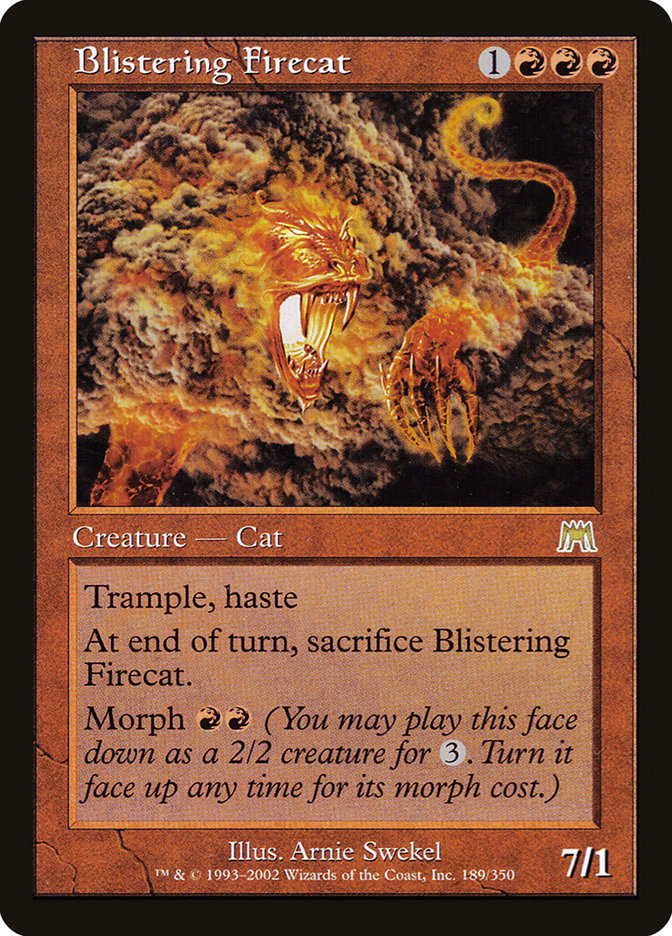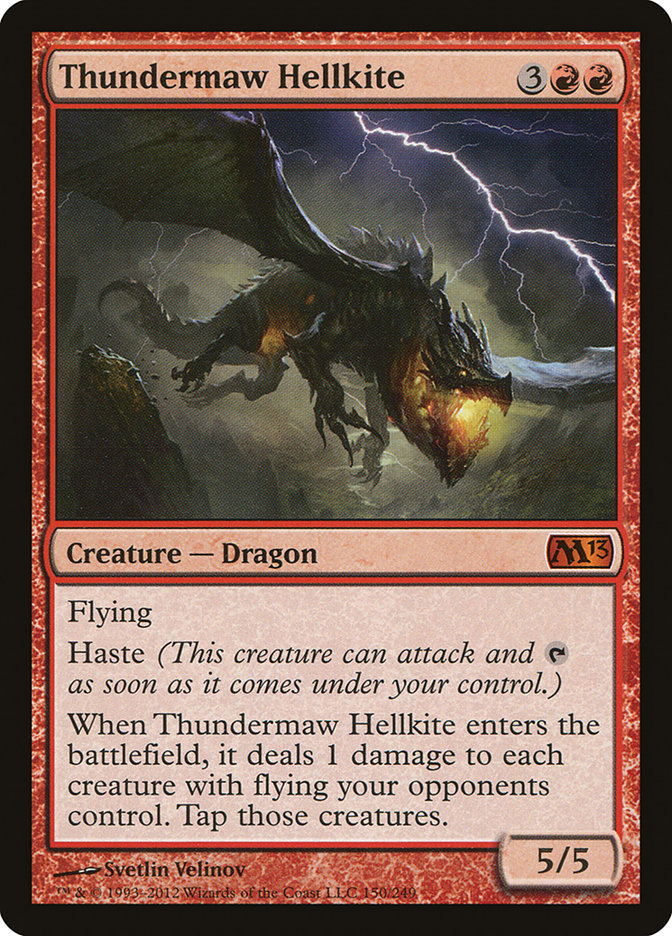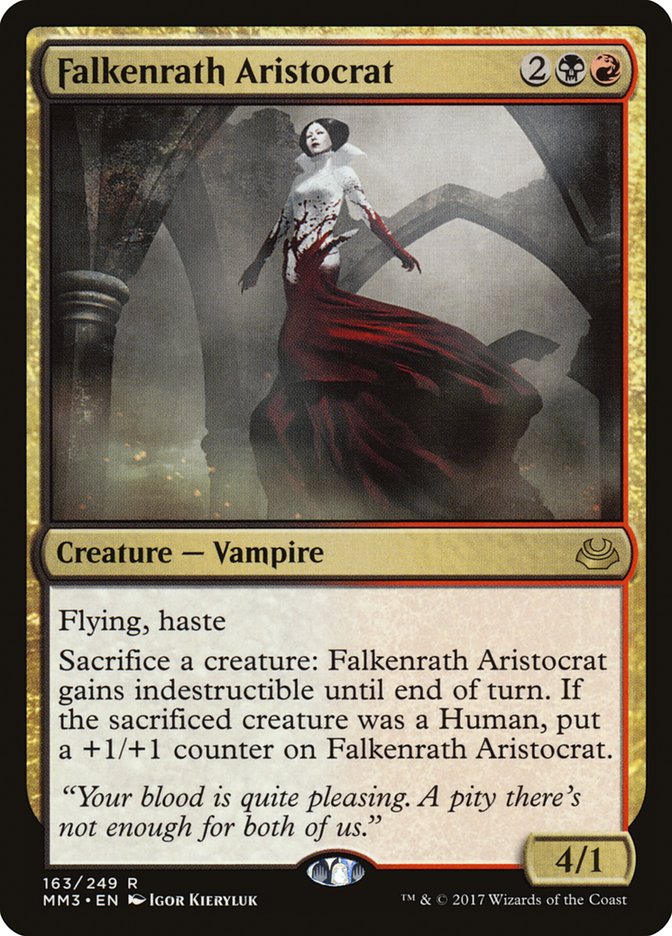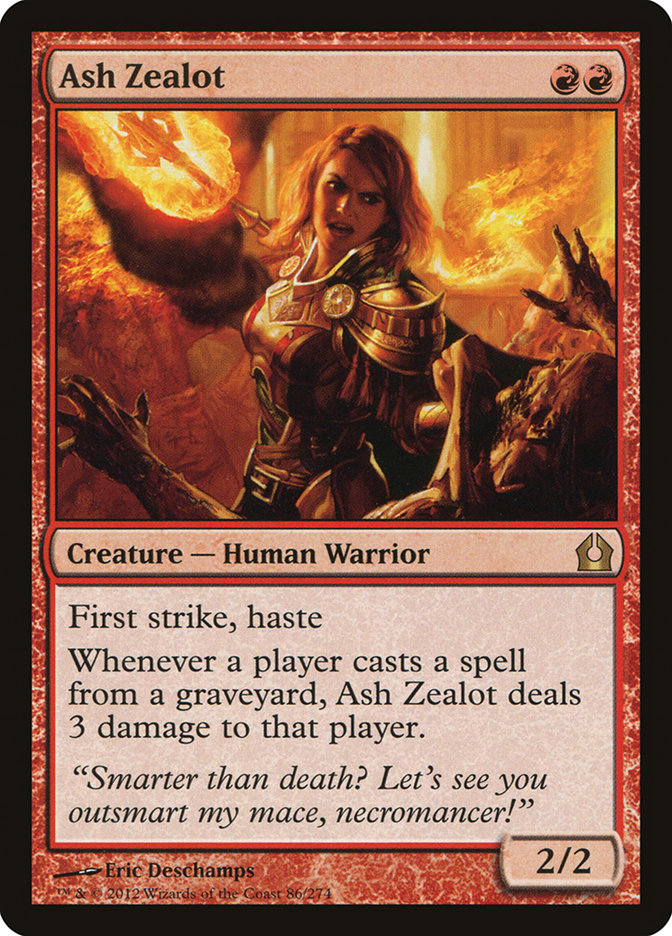This is a strange, exciting, and mysterious time in Magic: not only are we beginning the opening moments of a return to a “Big Standard,” but we’re also in that strange place where we have enough cards previewed from Amonkhet to have our appetites whetted, yet not enough for us to fully begin delving into the possibilities. As of the moment of this writing, there are about 100 cards left unrevealed; can you imagine how much you could accomplish between now and the first big Amonkhet Standard event, SCG Atlanta?
Cards like Curator of Mysteries and Archfiend of Ifnir clearly get a huge bump from the specific roster of cycling cards available. While we already have a decent number of other cycling cards that have been spoiled so far, even one truly powerful card on top of what we already know could completely shift our understanding of what is worthwhile.
Any cards that require something else to get a payoff have a lot of potential power still hidden. The new Gods of Amonkhet are a great example of this. After the most recent God was spoiled and the cycle completed, they are absolutely worth talking about in the context of what we already know.
In that previous cycle of Gods, back in Theros, every single mono-colored God saw at least some small amount of play. Thassa, God of the Sea, as one key part of Blue Devotion, obviously saw the most play; while arguments can be made between Heliod, God of the Sun and Nylea, God of the Hunt as the “least played” God (I vote Heliod), they made a splash because “devotion matters” was a natural payoff for simply playing a color. Their struggles at seeing play largely came out of two factors: how relevant the “passive” ability of the God was, and how good the cards you got to play in order to get the payoff were.
The new Gods are a different breed of deity indeed, though, because they each have a specific, unique condition to hold to be a useful part of the battlefield. Also, this is a different world from the time of Theros-era Standard, and these Gods, even if they can’t attack or block, can do other things.
It’s funny to imagine a God being so insubstantial that it can’t fight, but that it can get into a car and do demolition derby. Hell, though – I’ll take it and sing a song every time it happens. So long as Heart of Kiran doesn’t get the boot, every single God can hop into it and get their beatdown on. If Heart of Kiran weren’t already a highly prized card, it’s about to hop up another notch.
Heart of Kiran has been a decidedly and rightfully beloved and respected card in Standard for the duration it has been available. While I expect that some newly arriving tools are going to be helpful in answering it post-Amonkhet, it still serves as a frightening threat in general, and having an indestructible pilot is nothing to sneeze at.
Even Cultivator’s Caravan becomes more appealing when you know you’ll have such a powerful crew member for the Vehicle. It’s worth noting that for every single Amonkhet God, access to more mana is particularly valuable, since these activated abilities really do have significant value.
Once you start thinking about Cultivator’s Caravan, it does begin to open the door to think about other vehicles as well. Indestructible is a pretty incredible ability if you’re looking for a consistent pilot. Maybe it begins to make a card like Bomat Bazaar Barge worth thinking about. (Probably not.) More realistically, perhaps Skysovereign, Consul Flagship will see some more play in the new deity-heavy world.
After the obvious question of Vehicles, things really do shift into the breakdown, God-by-God, of what they’re good at. Let’s explore them one by one and see where they excel.
While I have respect for all of the Gods, with the cards I’ve seen thus far, Oketra the True is my least-favorite. At four mana, it can’t directly follow up a Heart of Kiran to begin an aggressive game that goes over the top. The requirement to establish the battlefield often requires a great deal of effort, both in terms of cards and mana. While double strike can be very frightening, Oketra the True seems like it is built for more of a “go wide” strategy, and I’m not really looking to find Trumpet Blast-style cards as my plan, nor is general pump great when you do go wide.
There are a number of options for going wide. The following cards are not an exhaustive list by any means, but they do seem to be a good sampling of possibilities that are open to Oketra the True devotees:
A few of these cards, like Sram’s Expertise and Angel of Invention, feel like completely natural fits into a Oketra the True deck. If one can bring the God into combat with only the investment of a single card more, that is a big deal. Oketra the True also feels like an excellent natural follow-up to Hanweir Garrison, with the God being able to hit the battlefield and defend immediately after a successful, casualty-free attack.
Hanweir Garrison’s successful attack is not an easy proposition, however. Many other cards don’t even have the ability to get Oketra the True active without help, and that isn’t even counting the potential for resistance in the form of creature removal, both sweeping cards and targeted removal. Even with the ability to make creatures, Oketra the True suffers a lot just by having its necessary condition for attacking and blocking be along the same axis that most games of Magic are fought over.
Simply put, Oketra the True’s limitations are firmly in the crosshairs of pretty much every deck.
That isn’t to say Oketra the True is unplayable, but I do think it will be the most challenging of the Gods to succeed with in the upcoming Standard.
I initially didn’t like this God for a very simple pair of reasons: the activated ability is a bit unwieldy and the condition Kefnet needs to meet in order to get into combat requires and abundance of either resources or time.
However, after reflecting on it more, I’ve come to quite like Kefnet the Mindful.
First of all, one of the most important elements of Kefnet the Mindful – shared by some of the other Gods – is that it is cheap. On the curve, Kefnet can immediately follow a Heart of Kiran, which is truly invaluable, whether the deck using the blue God is aggressive or defensive. The ability to shift modes has always been wildly important.
In addition, Kefnet flies. A combat-ready Kefnet the Mindful is a brick wall for an attacker. In those moments on the defense, a long-game Kefnet picking up cards will bury an opponent. Once you’ve begun attack, Kefnet still flies and can end games very, very rapidly.
Most Kefnet the Mindful decks are also going to be Heart of Kiran decks, but there can be other approaches to the card. Getting a Kefnet combat-ready can be accomplished with card draw, and so plenty of very reasonable cards are in the mix for consideration for a Kefnet player.
Card draw is always a great resource to have access to, but you can certainly glut on it if you aren’t doing something else. Kefnet the Mindful is a hell of a “something else” to be doing, even if its activated ability does have a way of potentially fighting against itself. In most of my imaginings of this card being used, it comes paired with Heart of Kiran, but that doesn’t mean that you necessarily want to run this as a full four-of – it would seem reasonable in those Heart/Kefnet decks to pair Kefnet with other three-casting-cost Gods.
Speaking of three-casting-cost Gods, Bontu is one of the others. Bontu is an intriguing God, if only because the opportunities to make Bontu the Glorified battle-ready are just so commonplace – but also potentially costly.
We still live in a world of Eldrazi, so Eldrazi Scions are an obvious and natural thing to think of when it comes to Bontu. Aside from the built-in and efficient sacrificing of the Eldrazi Scion, Bontu the Glorified itself is just naturally able to make itself ready to hop into combat. This effect, however, is more than a little costly. Being able to make use of the effect cheaply is important.
Thankfully, as Sam Black has shown us, Wizards of the Coast does enjoy giving us the means to sacrifice a creature for good effect.
This is clearly not an exhaustive list, but it goes to show that there are a number of powerful cards to consider. I didn’t include a card like Kalitas, Traitor of Ghet because, while powerful in its own right, it isn’t beating out Bontu the Glorified for efficiency in killing your own creatures. Still, despite this, the two could work together because of the value of the alternate payoff that Kalitas offers.
The card itself is really quite strange. Menace is a good ability for attacking, but some of the best times to sacrifice a creature are on defense. Scrying for mana is a great ability to employ at the end of a turn, but then you won’t be able to make use of the attack phase with Bontu. Sacrificing for the scry before declaring blockers is certainly effective, but Bontu the Glorified’s power won’t kill the very largest likely attackers, and menace isn’t meaningful during blocking.
Still, menace does come into play in helping make Bontu the Glorified a potential Gideon X killer. Dropping a Bontu onto the battlefield doesn’t make an opponent deeply excited to drop a Gideon of any stripe onto the battlefield in the early-game.
Like Oketra the True, Bontu the Glorified also plays very well with strategies that go wide. Token generation is a great thing that can fuel a Bontu that wants to be in play in the battlefield. Moreover, the scry from Bontu can then help find more fuel to keep things going.
While I very much appreciate that Bontu is one of the most consistently usable Gods in combat, I still keep finding myself a little underwhelmed by the card. It doesn’t feel too powerful offensively or defensively, and in most cases it demands that mana be used on its behalf to become active, unlike several other Gods. It is still great with Heart of Kiran, but I don’t find it pulling me in as much as most of the others do.
Speaking of pulling me in, wow, does Hazoret the Fervent pull me in.
This card will have an intense effect on Standard. As a hasty four-drop, the condition that Hazoret requires to attack is actually fairly easy for a red deck to accomplish. If you’re not sure about this, I’ll have you consult your history books.
When I think about some of my favorite aggressive red cards, they nearly all include the word “haste”.
It strikes me as very likely that Hazoret the Fervent will be able to crash in the moment you cast it.
That is scary. Beyond that, if you’re running a full set of Hazoret the Fervent, any extras you have become bad Shocks, as does any land you don’t need, any extraneous Heart of Kiran, or whatever other card you could name. Once you add in things like madness, Aftermath, or any other graveyard effects, you have an amazing extra way to take advantage of this God.
Ultimately, I just picture this god requiring almost no support to get going. “Play Magic” is the support needed to make Hazoret a player-killer. Even at four mana, this feels like the most aggressive God in the mix.
The other most aggressive God is certainly Rhonas the Indomitable. While technically it hits less hard than a battle-ready Oketra the True, Rhonas the Indomitable comes down more swiftly and is ready to fight under the simple condition of already being friends with a beater.
This take me back to the time of Sabretooth Outrider; while that was a Limited card, it just ended up being fairly trivial to make Sabretooth Outrider become formidable and then ruin the world for the opponent. If Sabretooth Outrider were also indestructible, I’m sure it would have made the cut in Constructed.
Of all of the Gods, Rhonas the Indomitable probably is the absolute best at playing with Heart of Kiran. Like the other three-drop Gods, Rhonas can hop on into the Heart of Kiran for an aggressive play, but Rhonas can do so much more than that. Activating its own ability to give a card like Heart of Kiran trample is pretty phenomenal (as is doing the same with Cultivator’s Caravan or Skysovereign, Consul Flagship). However, in addition to that, an active Heart of Kiran lets Rhonas come to the battle. We already have a ton of examples of decks that can make great use of Heart of Kiran, so Rhonas will very reasonably fit into any of those decks that use green mana.
Creatures (22)
- 3 Catacomb Sifter
- 3 Reality Smasher
- 2 Tireless Tracker
- 1 Verdurous Gearhulk
- 4 Scrapheap Scrounger
- 3 Winding Constrictor
- 2 Rishkar, Peema Renegade
- 4 Walking Ballista
Lands (22)
Spells (16)

It wouldn’t be at all surprising to see a deck like Motoaki Itou’s finding room for some Rhonas the Indomitable. If it did, it might end up including that fourth Heart of Kiran and more Verdurous Gearhulk. But one of the awesome things about a Rhonas the Indomitable deck is that even the smaller creatures in a Rhonas deck can still make Rhonas become ready to attack.
There are plenty of creatures that feel like a natural fit for the green God.
The deathtouch on Rhonas doesn’t necessarily feel all that important, given the large size of the God, but even without a real payoff for the deathtouch, Rhonas still feels to me as though it will be in that same territory that Hazoret the Fervent is in: a part of an incredible beatdown plan. I think it is going to be such an impactful card that I’m planning on picking up a full set of them.
It’s hard to believe the new set is already almost here! As always, I’ll be at Misty Mountain Games in Madison, Wisconsin for their Prerelease, and as always, I’ll be dodging on the midnight Prerelease event in favor of sleep. I don’t expect to get any Gods, but I’m certainly really hoping to do so!
I think all of these cards have a real potential to shake up how we’ll be playing Magic in the new Standard to come. I’m most intrigued by the red and green Gods, but they all have their home. If you didn’t already have a set of Heart of Kiran, it seems like now may be the time to get on board. Whatever the case may be on your end, whether you love the Gods as I do or not, you should make sure prepare yourself for their indestructible power.
It’s only one week until I get to play in the Prerelease. I can’t wait!


